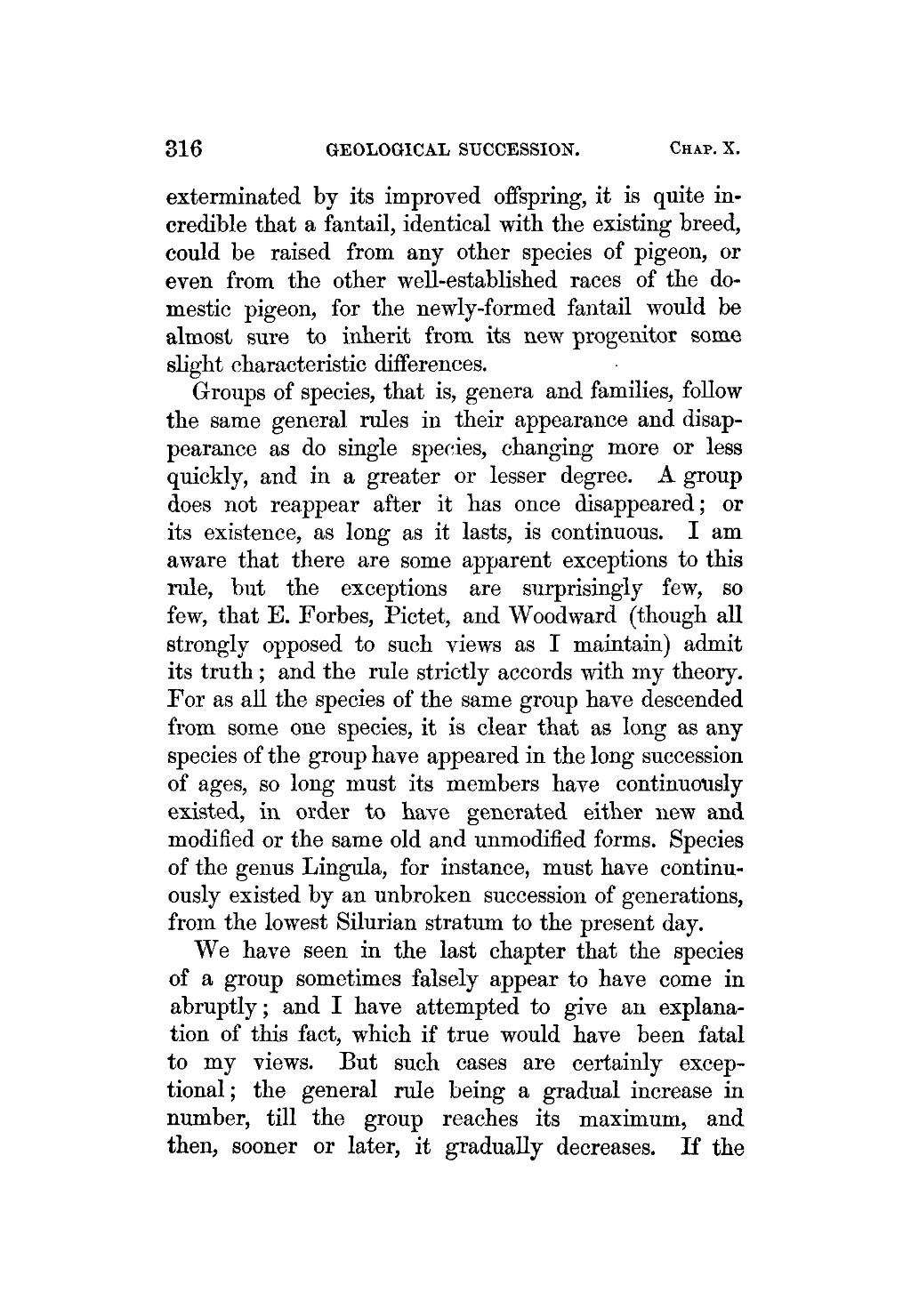exterminated by its improved offspring, it is quite incredible that a fantail, identical with the existing breed, could be raised from any other species of pigeon, or even from the other well-established races of the domestic pigeon, for the newly-formed fantail would be almost sure to inherit from its new progenitor some slight characteristic differences.
Groups of species, that is, genera and families, follow the same general rules in their appearance and disappearance as do single species, changing more or less quickly, and in a greater or lesser degree. A group does not reappear after it has once disappeared; or its existence, as long as it lasts, is continuous. I am aware that there are some apparent exceptions to this rule, but the exceptions are surprisingly few, so few, that E. Forbes, Pictet, and Woodward (though all strongly opposed to such views as I maintain) admit its truth; and the rule strictly accords with my theory. For as all the species of the same group have descended from some one species, it is clear that as long as any species of the group have appeared in the long succession of ages, so long must its members have continuously existed, in order to have generated either new and modified or the same old and unmodified forms. Species of the genus Lingula, for instance, must have continuously existed by an unbroken succession of generations, from the lowest Silurian stratum to the present day.
We have seen in the last chapter that the species of a group sometimes falsely appear to have come in abruptly; and I have attempted to give an explanation of this fact, which if true would have been fatal to my views. But such cases are certainly exceptional; the general rule being a gradual increase in number, till the group reaches its maximum, and then, sooner or later, it gradually decreases. If the

